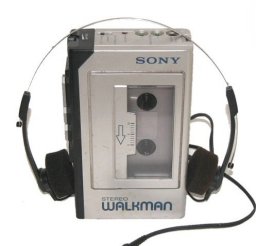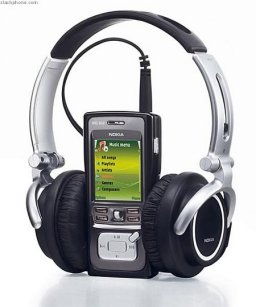 One of the great pieces of party trivia you can come up with [what sort of parties do you go to, Ewan? - Ed] is to ask who is the largest manufacturer of cameras in the world, and watch as everyone struggles through the likes of Canon, Nikon and Kodak, before hitting the answer... Nokia. This is now generally accepted, even though it's likely that not everyone uses the camera on their phone. Why should it be any different for other technology on a mobile phone?
One of the great pieces of party trivia you can come up with [what sort of parties do you go to, Ewan? - Ed] is to ask who is the largest manufacturer of cameras in the world, and watch as everyone struggles through the likes of Canon, Nikon and Kodak, before hitting the answer... Nokia. This is now generally accepted, even though it's likely that not everyone uses the camera on their phone. Why should it be any different for other technology on a mobile phone?
There is an argument that simply slapping an application into a phone doesn't mean it will be used, but over time the feature becomes less of a unique selling point and something that is expected in the phone. That takes time and it's unlikely that every commentator and analyst will agree on the exact tipping point. What is evident is that more and more people are using their mobile phone as their primary MP3/digital music player, and I think that at some point in 2009 we will pass the tipping point for audio.
Your phone is one of the most personal physical items that you have, something that is with you as you wake up, and there to help you into bed at night (at least mine is when I settle in with a nice eBook). Music is also one of the most personal things - tracks mean different things to different people. From a purely emotional level, the first cassette walkman and the tidal wave of personal music devices has made music a much more intimate experience.
Mix it in with your mobile phone, and it should be no surprise that I think the mobile phone will become the de facto number one choice for personal music.
 The lines are becoming very blurred - the iPhone may be the most obvious example of this, growing into a smartphone from a line of music players, rather than the more traditional starting point of a regular mobile phone, but the convergence long promised and promoted will not be held back by quibbling over the statistics.
The lines are becoming very blurred - the iPhone may be the most obvious example of this, growing into a smartphone from a line of music players, rather than the more traditional starting point of a regular mobile phone, but the convergence long promised and promoted will not be held back by quibbling over the statistics.
Phones are shipping with standard stereo 3.5mm jacks, with support for stereo Bluetooth headsets, with enough memory to hold a significant amount of music, with battery life that gives you confidence that a full day of listening to music is not going to leave you with no power as you head home from the office, and people are now expecting to see a music player on their phone. Yes, there will be many that are avoiding using their phone as the player, but as capacities and capabilities increase, more and more people will make that decision - coupled of course with older players being defunct or broken.
So back to that 32 million figure... 8 million standalone portable MP3 players out there is impressive and 24 million (smart)phones that can be MP3 players. Even if they're not all being used, that's a huge market that just needs a little push (or marketing) to get them using their phones - because you can be sure that there are a lot more home computers out there with MP3 files on them ready to be taken out into the world in someone's back pocket.
The question now is what commodity the collective of manufacturers will attack next...
-- Ewan Spence, Nov 2008
